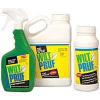Plants For Wet Soil
Poor drainage is often produced in disturbed sites where heavy clay soil is compacted by construction machinery,; areas cultivated for plantings collect water running off the compacted ground (panning effect). Wet areas may also be the result of swales, drain spout runoff and low areas even when soil percolation is adequate in most of the site. When water stands in the soil, air is displaced, which in turn smothers the plant roots. Once the roots are damaged, many symptoms appear on leaves and shoots including wilting, marginal and inter-veinal browning of leaves (scorch), poor color and stunted growth.
Diagnosis: To check for a potential drainage problem, dig a hole at least 2 feet deep, fill with water and note how long the water remains. If it doesn't drain away within 24 hours, a drainage problem exists.
Solutions: • Divert water past plantings. • Plant in mounds or raised beds. • Install drain tiles. • Amend the soil with organic matter such as mushroom compost or gypsum. • Select plants that tolerate wet sites.
Click here for a listing of plants tolerant of wet areas.







